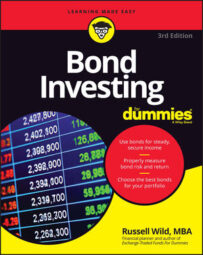Okay, okay, so diversification is a good thing, but why must a diversified portfolio include bonds? After all, there are many investments to choose from in this world.
True enough: There are many investments to choose from in this world. And if your portfolio is large enough, go ahead, invest in commodities and foreign real-estate funds and emerging-market stocks and stocks in small value international companies and hedge funds and emerging-market debt. All these asset classes are imperfectly correlated, so you will likely get extra return while shaving off some volatility.
But invest with caution. Even when you use sophisticated portfolio-building tools to take maximum advantage of Modern Portfolio Theory, diversification isn’t foolproof. It’s no guarantee that you won’t lose money.
Sometimes, even historically noncorrelated asset classes can move in the same direction. We’re seeing more examples of increased correlation these days. Thank globalization, which has tied many markets together. Thank hedge funds and exchange-traded funds, which have taken previously obscure asset classes, such as coffee-bean and palladium futures, and turned them into frequently traded investments.
Bonds protect you from perfect storms
Lately, the markets have seen several perfect storms: times when all the economic conditions are lined up in such a fashion that practically everything everywhere loses money. You may recall a few very ugly days on the markets in late February and early March 2007.
Tuesday, February 28, 2007 was one of the worst days the market has ever seen. As reported in The Wall Street Journal on March 1, 2007, “Not only did all 30 stocks of the Dow Industrial Average fall, so did all but two of the stocks in the Standard & Poor’s 500-stock index.”
The article goes on to explain that of 51 nations’ stock markets, only two — the tiny stock markets of Jordan and Morocco — did not swoon with all the rest. The article continues, “Emerging-market and junk-bond prices fell sharply. Even the price of gold, where investors typically run in times of trouble, fell.”
That day in early 2007, of course, was just a precursor to the market freefall that began later that year and continued until early 2009. At one point, the major indexes (such as the S&P and the Dow) were down about 50 percent. For the entire calendar year of 2008, the major indexes, both U.S. and foreign, were down nearly 40 percent.
Almost nothing was left unscathed: Asian stocks, European stocks, small caps, large caps, REITs… even commodities took a big tumble, as did — yes — many bonds, including municipals and high-yield corporate bonds. It was indeed the perfect storm.
But Treasuries and the highest quality corporate bonds more than held their own. Once again, these particular asset classes provided portfolios with some cushion during the hardest of times.
Bonds have a centuries-old track record
Not only do high-quality bonds, such as Treasuries, have a proven track record of slightly negative correlation to the stock market, but they also have a long history of stability and positive returns. So they provide two vital roles in a portfolio: diversification and (just in case diversification doesn’t work) a solid floor that will keep your portfolio from falling past a point of no return.
You can’t say that about many other asset classes. You couldn’t say it prior to 2008, and you certainly can’t today. Here’s why:
Foreign stocks: With the globalization of markets, foreign stocks, although they still offer limited correlation to U.S. markets, are beginning to have less diversification power. And foreign stocks, like all stocks, can be very volatile, especially with currency fluctuations.
Gold: The precious metal, a hedge against stock market gyrations for generations, has lost some its diversifying glimmer. Lately, for a number of reasons, gold has moved in synch with the stock market more often than not.
It’s also unclear whether gold, silver, oil, or any other nonproductive commodity is going to produce gains in the long run. Over the past 100 years, the price of gold has risen just about the same as the rate of inflation.
Hedge funds: They are expensive. Terribly expensive. They are opaque (it’s 11 p.m. — do you know where your money is?). They are volatile. They are illiquid (meaning it’s sometimes hard to unload your shares). They may or may not give you the diversification you seek.
Cash: Nothing in the short run is as safe as cash. The price of cash is, well, the price of cash! But over the long run, cash is inevitably eaten up by inflation. Keep too much of your portfolio in cash, and you are taking a real risk of losing purchasing power over time.
(Say, for example, your grandfather earned about $12,000 a year during the 1930s, stored an entire year’s salary in cash, and left it under the mattress for you. You could use that money today to perhaps buy a very cheap used car.)
On the other hand, quality bonds — Treasuries, agencies, and investment-grade corporate bonds — seem to have lost none of their diversifying power. They held up well in 2008, when nothing else did. Plus, they earn enough return (generally) to stay ahead of inflation, and they are stable.
In fact, because bonds offer a steady stream of income, which tends to offset any price depreciation, and because those bond payments are not contingent on company profits (as are stock dividends), quality bonds very rarely lose money.
Occasionally, when interest rates rise, long-term investment-quality bonds may lose value for a year or two. By year three, however, you are virtually assured of at least breaking even (at least if history is your guide).

